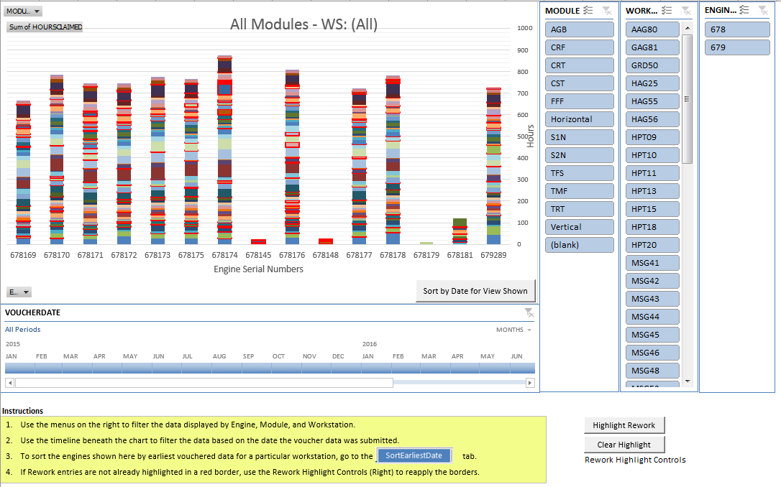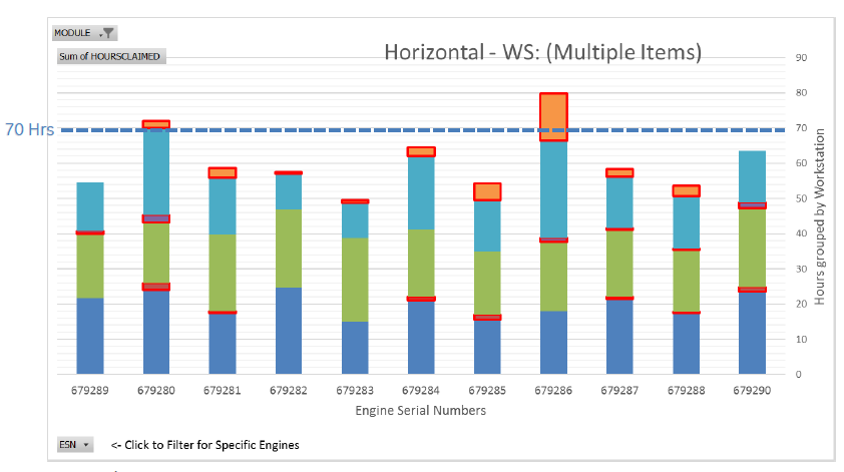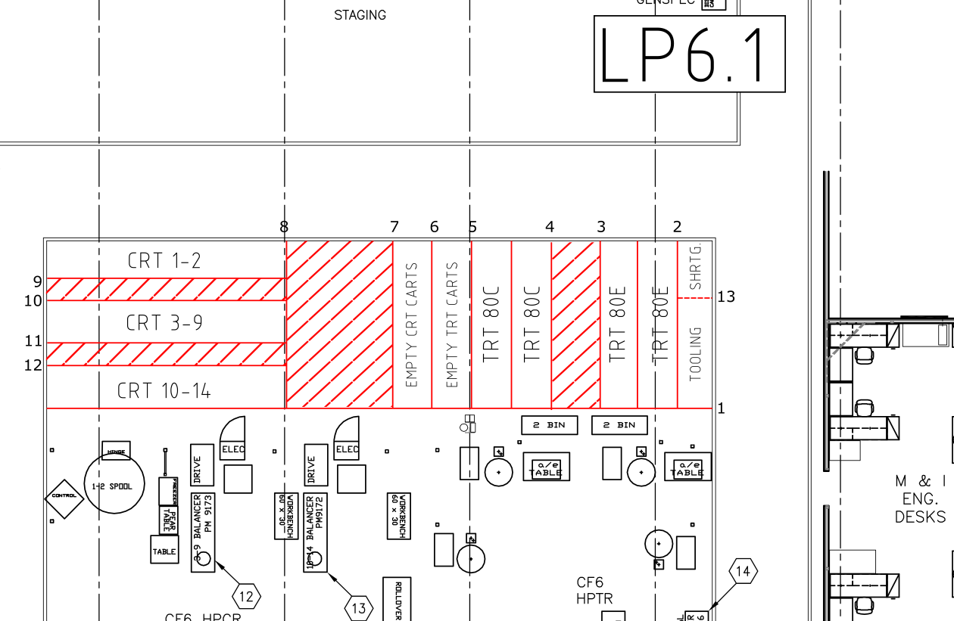Background
When: Summers 2015, 2016, 2017Where: Evendale, OH
I completed several summer internship rotations working for GE Aviation, a company which specializes in designing and manufacturing turbofan and turbojet engines for the aviation sector.
Data Visualization and Analysis
Two of the major projects I worked on at GE involved creating tools to analyze and visualze data for manufacturing shops. The projects involved a combination of Excel macros and SQL scripting.
In my first project, I created a tool to gather data on in-process workpieces. The Manufacturing Execution System (MES) that the company was using at my location did not provide easy access for supervisors to be able to tell where a specific work order was located within the manufacturing process. Using data pulled automatically from the MES and combining it with smart algorithms to make a 'best judgement' guess when information was missing or corrupt, my tool is able to generate a comprehensive report for hundreds of work orders within 60 seconds—information that would have taken 2+ hours to acquire manually. After Six Sigma analysis, the total savings created by this tool were estimated at $24,000/year.
My second data-viz project was for viewing aggregated data on the amount of hours spent working by engine assembly mechanics. The tool automatically collects data from a SQL database about individual steps in the assembly process and then provides managers with a dynamic interface that they can use to either view the data at a per-engine level or to drill down and view productivity trends for any individual step of the process. This tool is used extensively to easily show mechanics how their productivty was improving or declining over time.


Tool Design
While at GE, I also designed and prototyped a tool for engine assemblers to use when attaching blades to combustor assemblies. The assemblers were having ergonomic and skin irritation issues when handling the blades manually. The tool provided a sheath for the blade and a larger, more comfortable handle for the assemblers to hold.

The tool was modeled in AutoCAD Inventor and then 3D printed for testing purposes. The assemblers were given the opportunity to provide detailed feedback about the design and ergonomics of the tool.
Staging Organization
During my time in the assembly shop at GE, I was given the task of drawing "swim-lanes" for the staging area of the rotor shop—the place where engine rotor parts are dropped off before being assembled into a rotor. Swim-lanes are essentially queues marked on the floor where truckers leave incoming material. At the time, there were no queues and the area was a mess of boxes piled up in no particular order, waiting to be used.

I was in charge of coordinating the entire re-design process, including getting buy-in from Safety, Quality, Facilities, and the people actually working in the rotor shop. I started by interviewing with each of the stakeholders to figure out what would be important to them in the final layout. I then drafted several potential sketches of the floor layout plan, had some of them mocked up using temporary floor tape, and organized a meeting with all the stakeholders to get feedback. The feedback was used to inform the final design shown below.

This project demonstrates my ability to take charge of a problem and communicate my solutions to that problem effectively. I had to work with many different sectors of the GE Aviation business and ensure that everyone I talked to had a clear understanding of the changes I was proposing and what the consequences of those changes would be for them.